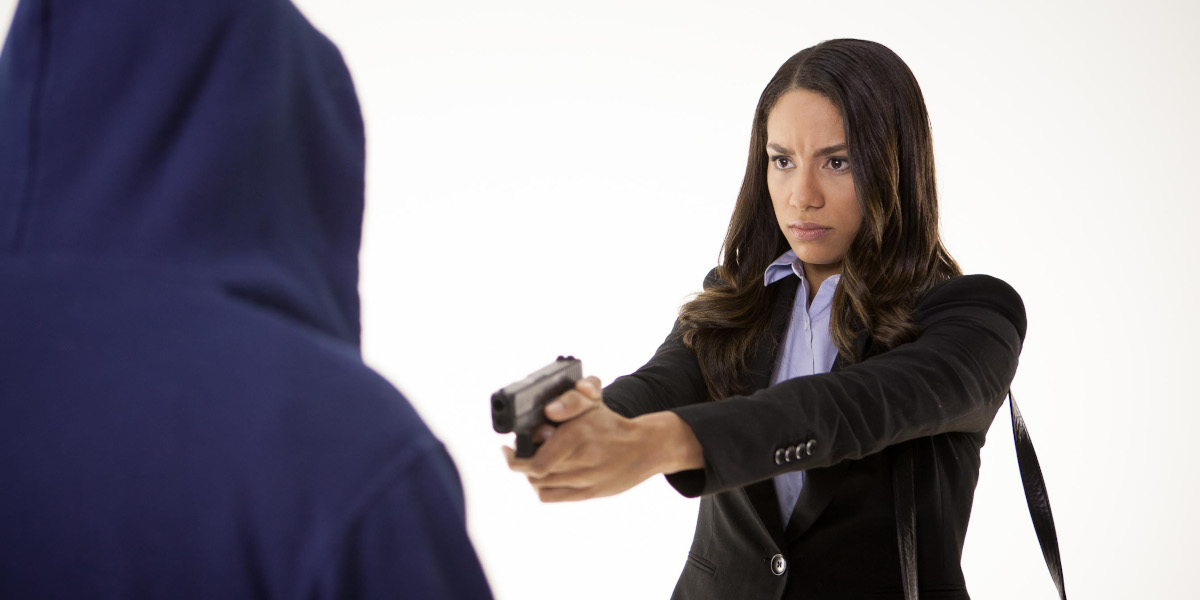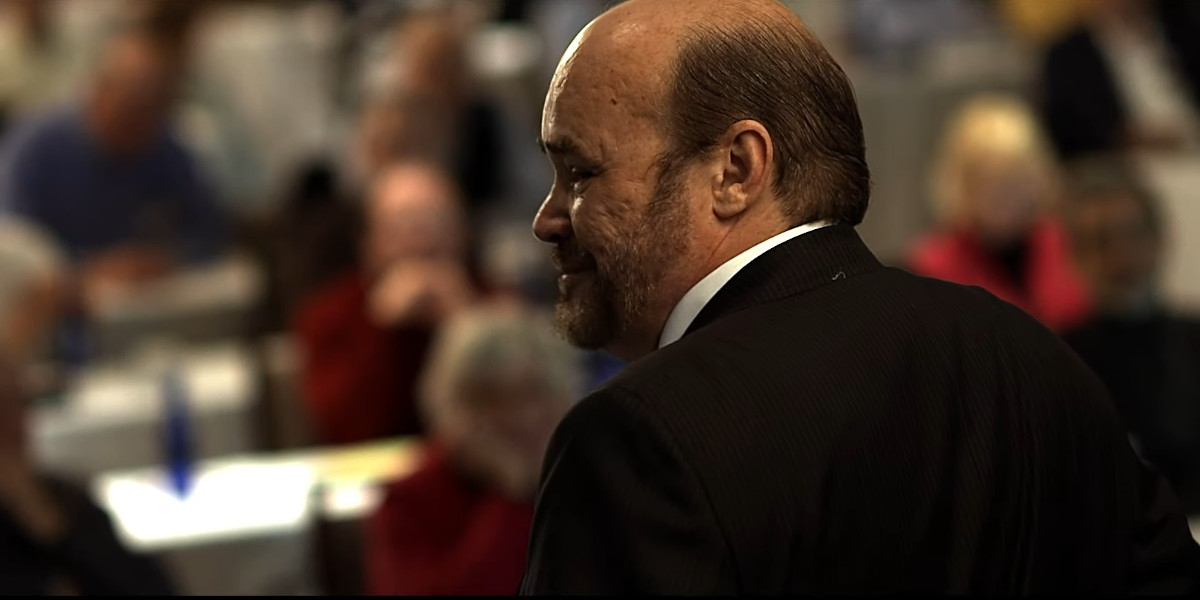What Is Situational Awareness?

Situational awareness is a simple concept that some people insist on making extremely complicated. In a nutshell, it consists primarily of following the advice your mother gave you when you were four years old: "Pay attention to what's around you!"
When children first learn to cross the street, their heads whip back and forth, scanning intently for danger. If a car is anywhere in sight, they'll probably yell, "Car!" and jump back in alarm. As an adult, you probably don't cross the street that way. You probably glance around calmly, including a peek around the corner to see if any cars are turning towards you, calculate the speed of any oncoming vehicles, and either cross the speed at whatever pace seems appropriate, or wait for traffic to clear. This is a perfect example of good situational awareness.
Some people don't cross the street that way. They simply wait for a "walk" signal, and go. Or, worse yet, they don't even wait for the light to change in their favor, and simply walk into the roadway, seemingly with full confidence that traffic will part for them like the Red Sea did for Moses. Sometimes they have earbuds in their ears, sometimes they're looking at their phones, sometimes they're talking to each other. If they do happen to notice a car slamming on its brakes to avoid hitting them, they usually look annoyed and surprised, as though a car driving down the road is the last thing they could have expected to have to deal with. This is a perfect example of terrible situational awareness.
What's even scarier is that those people probably drive the same way they walk. Meaning that, at any given time, some percentage of both drivers and pedestrians are completely oblivious to what's going on. Do clueless pedestrians deserve to be mowed down by clueless drivers? No, of course not. But, is it really surprising when such a tragedy occurs?
In a perfect world, we could all cross in the crosswalk on a "walk" signal, without worrying about getting smushed by a teenager driving a Denali while texting his girlfriend. In the same world, women could leave their drinks unattended at the bar while they go to the restroom, and children could accept candy from friendly strangers who need help searching for lost puppies.
The fact of the matter is that, although nobody deserves to be victimized, and sometimes there's just nothing you can do to prevent an accident or a crime, all of us owe it to ourselves to do whatever we can to avoid danger.
Sometimes, this common-sense approach is criticized as "victim-blaming." The logic of that allegation works like this: "By stating that people can take steps to keep themselves safe, you are implying that people who were hurt by others were negligent in not protecting themselves." The typical resolution to this thorny dilemma is to perpetuate the myth of the omnipotent attacker: a predator so powerful, so dangerous, so cunning, that there was nothing the victim could possibly have done to avoid the traumatic event.
This is a deeply troubling perspective. Certainly, nobody who has been mugged or raped should ever be told that, "it was their own fault." Without question, the blame for any crime rests entirely on the perpetrator. Indeed, for the sake of human decency, it should be assumed that every victim did everything they could to prevent what happened to them. However, the fact of the matter is that most attackers are not like horror-movie villains. They openly telegraph signals that indicate their ill intentions, they are physically vulnerable in the same way other human beings are, and very often they aren't even particularly big or strong. The answer then, is not to say that victims didn't do enough, but that they had never been taught what to do.
We live in a society that would rather ignore challenging realities than confront them. To avoid victim-blaming, the myth that victims are powerless is promulgated by crime dramas, daytime talk-shows, and online news sites. It is easy to imagine (although difficult to prove) that this creates a self-fulfilling prophecy: by teaching the public that they are powerless against violence, the media essentially trains people to submit to attacks.
While learning practical self-defense skills is a vital step in counteracting the toxic mindset of helplessness, the importance of the cultivation of situational awareness can not be overstated. Every decent self-defense instructor would prefer for his or her students to avoid a dangerous situation, rather than have to fight their way out of it. That process of avoidance begins, 100% of the time, with situational awareness.
For better or worse (and sometimes there seem to be as many critics as advocates), the standard method of discussing situational awareness is based on "Cooper's Colors." John Dean "Jeff" Cooper is a legend in the military, law enforcement, and defensive shooting worlds. The concepts and methods of firearms handling that he pioneered in the 1950s are - with only slight modifications - still taught to civilians and professionals around the world.
As impressive as his combat tactics are, the most important factor in surviving a violent encounter, according to Cooper himself, is not physical but mental: what Cooper called the "combat mindset." The "Gunsite Color Code," often referred to as "Cooper's Colors," are not so much a rigid system as a convenient shorthand for describing various mindsets. There are four colors: white, yellow, orange and red. Unlike the "Threat Condition" colors used by various public agencies, the colors do not reflect anticipated threat, but psychological readiness. In practice, they work like this:
White
Condition White is the state of readiness of our earbud-listening jaywalkers. In a word: oblivious. Your eyes are probably looking down at your cel phone, you are shuffling along totally unaware of what's around you. To a predatory criminal, you are an easy target, because you would have no idea what was happening to you until the assault was in progress, and you would be totally unprepared to respond.

Yellow
Condition Yellow is the mental state of a normal adult crossing the street. In a word: aware. In a relaxed, way, you observe your environment. If something is out of place or troubling, you are likely to notice it. You operate under the assumption that, should something unpleasant happen, you will have to respond quickly and effectively to the best of your ability. To a predatory criminal, you look like a "hard target." You're not anxiously looking around and over-reacting like a child who doesn't know what's dangerous, you're just paying attention to what's around you. Ideally, this would be your natural, default state of mind.

Orange
Condition Orange is what you mentally transition to, in the presence of a potential threat. In a word: alert. You were calmly observing your environment, and now something out of the ordinary has happened. Maybe a stranger is paying unusually close attention to you, or trying to engage you in conversation; perhaps a group of young men are walking towards you, with no obvious reason to be moving in that direction; maybe you're in a store, and somebody walks in who seems anxious and has no interest in the merchandise. Whatever the situation is, something is out of the ordinary, and you register that it could be dangerous.
At this point, it is advisable either to leave the area, or - if necessary - to set a verbal and physical boundary. This can be as simple as extending your hand in a "stop" gesture, and firmly saying, "I'm sorry, I can't help you." If it's a normal person with some kind of innocent question, they will respect this boundary and leave you alone.On the other hand, if the person continues to try to talk to you, that's a big red flag. In The Gift of Fear, essential reading on this subject, author and safety expert Gavin DeBecker calls this process "the interview." It's an interview you want to fail. You want your interviewer to decide that you're too much trouble to victimize.
Now, it's time for you to be rude. They want to know what time it is, they want to ask you a question, they want to help you with your groceries; you restate your boundary in no uncertain terms. If they're persistent (and they usually are), Gavin DeBecker advises you to remember that "No!" is a complete sentence. If necessary, follow it up with, "I said, 'No!'" Ideally, the person will give up in disgust, and walk away, probably expressing his unpleasant opinion of you. That's a win, because you didn't have to fight, and you get to go home safe.

Red
Condition Red is the mindset you enter when the potential threat becomes an actual threat. In a word: alarmed. This is the metaphorical "code red," meaning that you are now engaged in what could be a life-ending altercation. Maybe he's pulled a knife or a gun, maybe he's indicated that he's about to put his hands on you, maybe he's ignored the physical boundary you put up by physically entering your personal space. This means that you have crossed what combat profilers call the "threshold of decision." You must now do something decisive to ensure your own safety.

Make no mistake: this is an extremely difficult situation to assess, on-the-fly. You have to decide how much danger you're really in, and respond appropriately. If you're at a bar, and an obnoxious drunk won't stop trying to put his arm around you, it might be appropriate to give him a good sharp elbow to the solar plexus, but it would be difficult to justify drawing a handgun. On the other hand, if you're walking to your car in a darkened parking lot and three guys are closing in on you, even if they haven't said a word, you might legitimately feel in danger of death or grievous bodily harm. The key here is to cross the threshold of decision BEFORE you're actually attacked, because as soon as you're forced to be reactive, rather than proactive, your odds of success - and survival - fall drastically. If you wait for someone to punch you, grab you, or stab you before you decide that you need to defend yourself, you've squandered the advantage that situational awareness provides.
It's vitally important not to be cavalier about assessing threats. If somebody pulls a gun on you and demands your wallet, they might go away if you give it to them. Conversely, if you don't immediately respond to disarm and neutralize them, they might shoot you in the face. Whether or not you decide to find out is completely up to you. It's a split-second position that potentially affects the rest of your life, and unfortunately there's no second chance.
Situational awareness is not about being Billy Badass with your head on a swivel everywhere you go. It's not about being Sherlock Holmes or Jason Bourne. It's about paying attention to what's around you, in order to have time to respond appropriately. What's appropriate in any given situation will be for you, and you alone, to determine. You can't control what other people try to do to you, but by being aware of your environment, you make yourself a less appealing target, you give yourself a window of opportunity to avoid potential threats, and you gain the freedom to act, rather than react.
When a child gets hit by a car, nobody blames the child, but everyone wishes that he'd gotten out of the way. Acts of violence are the same: if something terrible happens to you, it's not your fault, but you'll always wonder if you could have avoided it. Staying relaxed, aware, and ready for whatever comes your way is your insurance that if you CAN avoid danger, you will have a fighting chance to do so.
For more on the the mindset of predicting danger and staying safe in general, read "The Gift of Fear". For more on the specific tactics and techniques of combat profiling and spotting dangerous people, read "Left of Bang."




